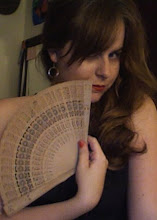Anderson, John. "Dylan Movie to Open Like a Rolling Premiere." The New York Times. 21 Aug 2007. 29 Oct 2008 <http://www.nytimes.com/2007/08/21/movies/21dyla.html/partner/rssnyt/?scp=9&sq=%22I'm%20Not%20There%22&st=cse>.
-Explains the efforts of the Weinstein company in regards to distribution of the film.
Hernandez, Eugene. "HanWay + Celluloid Dreams=Dreamachine; New Combined Company Launching in Cannes." IndieWIRE. 03 Apr 2007. 29 Oct 2008
Lyall, Sarah. "In Stetson or Wig, He's Hard to Pin Down." The New York Times. 04 Nov 2007. 29 Oct 2008
Wisniewski, Chris. "An American Tale: Todd Haynes' "I'm Not There". IndieWIRE. 19 Nov 2007. 29 Oct 2008
-Review discussing the success that the film had in the execution of a fractured narrative
Research Question:
I would like to examine the methods used to market and distribute I'm Not There. As I understand it, the Weinstein Company faced a challenge of marketing an experimental art film filled with famous faces, and they chose to open on fewer screens in the hopes that critical acclaim would save the film.

